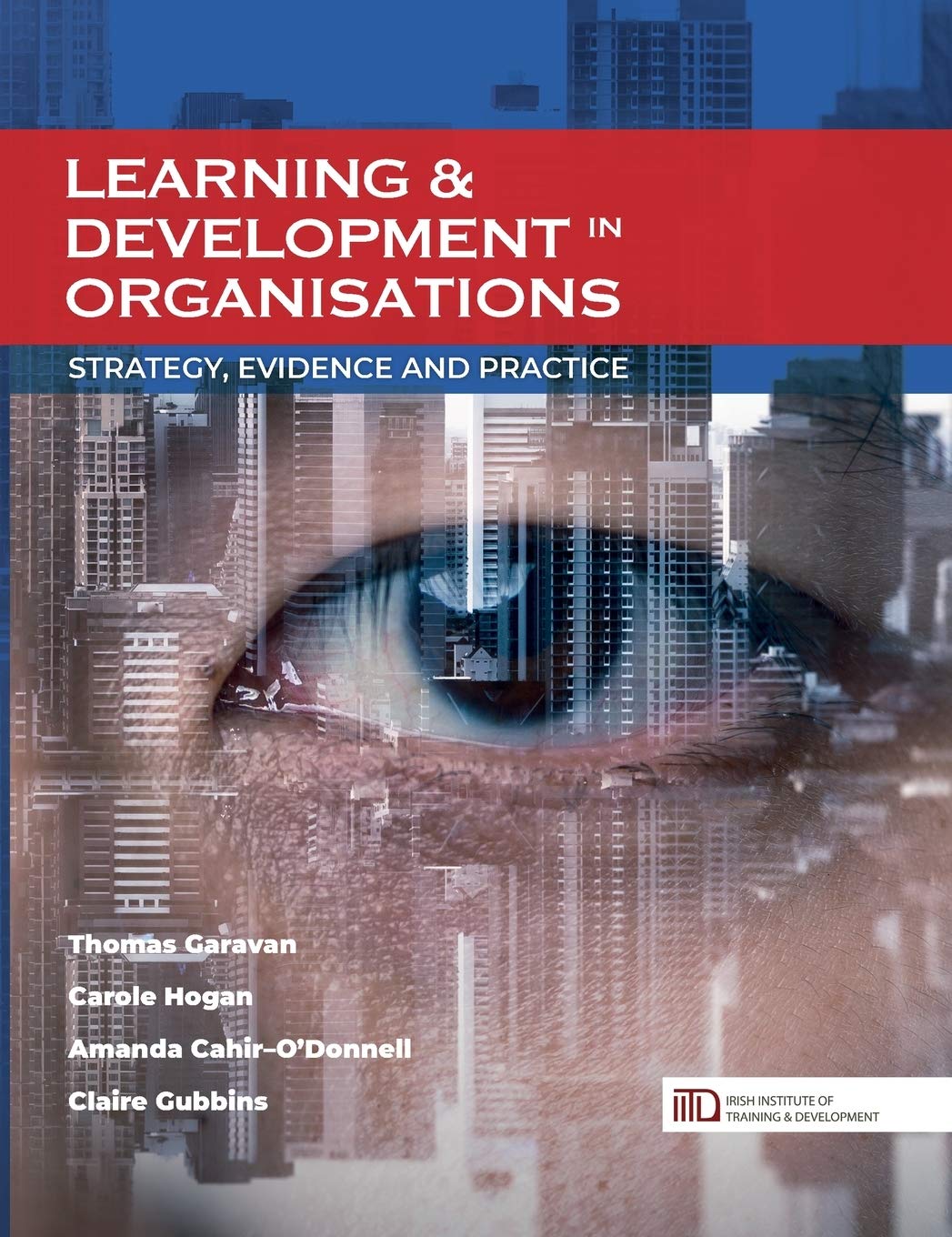Learning and development in organisations – Strategy, Evidence and Practice (T.Garavan, C. Hogan, A. Cahir-O’Donnell, C. Gubbins) and commissioned by the IITD
Milla Clynes, Director of Operations and Senior Learning Specialist at Harvest, discusses the IITD’s most recent publication, Learning & Development in Organisations: Strategy, Evidence and Practice by Thomas Garavan, Carole Hogan, Amanda Cahir-O’Donnell and Claire Gubbins.
The IITD published its long-awaited book in September and I’ve had the pleasure of being an early recipient of a copy. The authors of the book; Professor Tom Garavan, Carole Hogan, Amanda Cahir-O’Donnell and Claire Gubbins, are all masters in the field and have provided us with an outstanding practitioner reference manual for years to come. The book covers L&D in organisations, from concepts, L&D strategy development, adult learning theory, the stages in learning development, right through to the future of L&D and the competencies required of L&D professionals. It brings together academic research from throughout the years and the most recent thought leadership, with case studies from a broad selection of organisations to help highlight how theoretical concepts are used in real life.
Who it is for
The book will be useful as an academic reference for any L&D related course and can be used at any accreditation level due to its broad span of topics. In addition, it is an invaluable reference manual for any L&D professional looking to understand the context of their work from both an academic and a practitioner point of view. The book is laid out in three core sections.
Section 1: Concepts and Contexts of L&D in Organisations
These strategic chapters serve to deepen our understanding of the context that L&D strategy sits in, and helps to embed the view that there is no ‘best practice’ in L&D, only fit-for-purpose practice.
These chapters would be useful to any L&D leader looking for new innovative ways of framing their L&D strategy. They would be equally useful to a student looking to understand what L&D strategic business partnering is about.
Section 2: The Theory and Practice of L&D
These chapters go through the core L&D processes and concepts around adult learning theory and all of the L&D process stages: learning needs analysis, design, implementation and evaluation. It covers these basic elements comprehensively and with due regard to the changing world of learning technology and new delivery methods.
This section is useful to anyone looking to understand how L&D practitioners go about their work. It is also useful for anyone moving from classroom-based learning design and delivery to blended and virtual delivery. It integrates digital learning and instructor-led training in a truly blended way and explains concepts clearly and by using plenty of practitioner examples.
Section 3: Developing the L&D Professional and the Future Roles of L&D
This section brings the publication into the future world of work and learning, outlining the challenges to the L&D professional in upskilling and broadening their portfolio of skills and competencies in order to stay relevant. It sets out future opportunities and challenges for L&D and challenges our thinking in terms of the direction of our continued professional development.
This section is critical reading for anyone in L&D no matter what stage their career is in.
The value of having a publication like this
This book brings together a plethora of thought leadership in L&D, supporting L&D professionals in their work now, and into the future.
It will help L&D leaders communicate the value of what they do, allow L&D business partners to ask the right questions, and assist trainers and facilitators in transitioning to digital/virtual learning. It is a gargantuan source (755 pages!) with up-to-date knowledge on an industry we are all passionate about.
Key insights and must-reads
I’ve immensely enjoyed reading this book, it’s equally as easy to read chapters in sequence as it is dipping in and out of topics.
There are three chapters I particularly enjoyed:
Chapter 2, Section 2.2: Theoretical perspectives: Explaining the contribution of L&D
It is a constant challenge for L&D professionals to justify spending on L&D and proving return on investment. This chapter provides a number of different angles on this topic, that I found interesting and challenging to think about.
Chapter 6 (the full chapter): Designing Classroom, Digital, Blended and Flipped Learning Solutions.
Although there are a lot of useful pieces in this section of the book, I particularly like the way this chapter describes learning solutions as a smooth integration of human and technology-based learning methods that combine instructor-led, social and self-managed learning.
In Harvest we have long been proponents of integrating the digital and the classroom-based solutions. It is a pleasure to read about it being described in those terms, focusing on the learning objectives and the solution being built through a pure and method-agnostic focus on the learning needs and desired outcomes.
Chapter 13 section 13.4. Models of Training Evaluation
This was one of the first chapters I read in the book, with learning evaluation being a topic of constant questioning by L&D professionals. The book describes the New World Kirkpatrick Model of Evaluation, which I’ve written about in a previous blog post from February 2020: https://www.harvest.ie/trends-insights/286-learning. This model is interesting and very useful from a practitioner point of view.
I’d like to congratulate the IITD and the distinguished team of authors on their outstanding work, I can see this book on desks and shelves of L&D professionals everywhere (or perhaps you prefer the digital version). My own copy is already dog-eared!
The book is available here: http://www.successstore.com/learning-development-in-organisations.html


